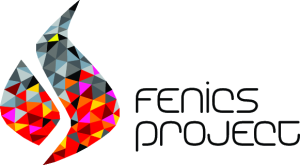Automated computational mathematical modeling
I am a generalist and mathematician with a broad interest for many and diverse applications, such as biomedicine, general relativity, and architecture. In particular, my interest is in simulation and how simulation methodology and its realization as software can be automated, generalized, and reused across disciplines. In my thesis, I formulated this challenge as the Automation of Computational Mathematical Modeling. Most of my research is centered around this challenge: the formulation and analysis of general adaptive finite element methods, development of domain-specific languages for scientific computing, implementation and dissemination of high-level software systems for automated computing (the FEniCS Project), and application of the methodology to a number of application domains.

Selected publications
- Automation of Computational Mathematical Modeling
Ph.D. Thesis, Chalmers University of Technology, 2004 - Automating the Finite Element Method
Archives of Computational Methods in Engineering, vol. 14, pp. 93—138, 2007, [DOI], [arXiv]
The FEniCS Project
Together with colleagues from Chalmers and University of Chicago, I founded the FEniCS Project in 2003. Since then, the project has grown to become a leading open-source software for the simulation of models expressed as partial differential equations. FEniCS is the realization – in part – of the vision of automated computational mathematical modeling in that it allows researchers and engineers to express complex mathematical models in mathematical notation and automatically compute solutions based on automatically generated high-performance computer codes, on laptops as well as supercomputers.

Selected publications
- Automated Solution of Differential Equations by the Finite Element Method
Springer, 2012 - DOLFIN: Automated Finite Element Computing
ACM Transactions on Mathematical Software, vol. 37, 2010, [DOI], [arXiv] - A Compiler for Variational Forms
ACM Transactions on Mathematical Software, vol. 32, pp. 417—444, 2006, [DOI], [arXiv]
Adaptive finite element methods
To automate, one needs a method. My method of choice is adaptive finite element methods (FEM). The finite element method is a machinery for efficient discretization of almost any ordinary or partial differential equation. This machinery is what has been automated – in large parts – as part of the FEniCS Project. A central issue in the numerical (approximate) solution of any problem is the accuracy of the computed numerical solution. This accuracy can be estimated numerically and can be used to drive the solution algorithm so as to compute solutions with a given accuracy using a minimal amount of resources. I have worked extensively on the development and implementation of such adaptive finite element methods. In particular, I have investigated how the adaptive analysis and methodology can be automated.

Selected publications
- Automated Goal-Oriented Error Control I: Stationary Variational Problems
SIAM Journal on Scientific Computing, vol. 35, pp. C173—C193, 2013, [DOI], [arXiv] - An Adaptive Finite Element Splitting Method for the Incompressible Navier–Stokes Equations
Computer Methods in Applied Mechanics and Engineering, vol. 209–212, pp. 54—65, 2011, [DOI], [arXiv] - Multi-Adaptive Galerkin Methods for ODEs I
SIAM J. Sci. Comput., vol. 24, pp. 1879—1902, 2003, [DOI], [arXiv]
Multimesh finite element methods
I work actively on the development of new finite element methods for multiphysics problems that can easily cope with evolving and complex geometries. Multimesh finite element methods are finite element methods formulated not on a single interface-fitted mesh, but on multiple (two, three, maybe hundreds of) meshes. Each mesh may be fitted to a certain object but the meshes may overlap and evolve arbitrarily. Multimesh finite element methods are based on coupling solutions on different meshes via certain interface conditions, typically based on a Nitsche continuous/discontinuous finite element formulation. I am interested in both the formulation and analysis of provably stable methods and the implementation of robust and efficient multimesh software components. The multimesh methods have recently been implemented and automated as part of FEniCS.
Selected publications
- Efficient Implementation of Finite Element Methods on Non-Matching and Overlapping Meshes in 3D
SIAM Journal on Scientific Computing, vol. 35, pp. C23—C47, 2013, [DOI], [arXiv] - A Stabilized Nitsche Overlapping Mesh Method for the Stokes Problem
Numerische Mathematik, pp. 1—29, 2014, [DOI], [arXiv] - A Nitsche-Based Cut Finite Element Method for a Fluid–Structure Interaction Problem
Communications in Applied Mathematics and Computational Science, vol. 10, pp. 97—120, 2015, [arXiv] - High Order Cut Finite Element Methods for the Stokes Problem
Advanced Modeling and Simulation in Engineering Sciences, vol. 2, 2015, [DOI], [arXiv]

Numerical relativity
Together with colleagues at Chalmers, I have developed novel finite element methods for the simulation of self-gravitating systems described by the Einstein-Vlasov system, which consists of the Einstein field equations for general relativity in combination with a kinetic energy-matter model. Our computed galaxies exhibit many interesting shapes and features, including toroidal highly relativistic configurations, composite objects, spindles, and disks. We also demonstrate, for the first time, solutions of the Einstein–Vlasov system which contain ergoregions.

Selected publications
Biomedical computing
Together with my colleagues at the Center for Biomedical Computing at Simula Research Laboratory I have developed novel simulation methods, solvers and Python/FEniCS-based software platforms for segmentation of geometries and simulation of flow and fluid-structure interaction in biomedical applications, such as cardiovascular flow and cerebral hemodynamics.

Selected publications
- Computational Hemodynamics
in Automated Solution of Differential Equations by the Finite Element Method, Edited by , Springer, chapter 23, 2012
Computational architecture
I am the profile leader of the Excellence Profile Computational Design and Production within the Chalmers Area of Advance the Built Environment. Our work focuses on the development of mathematics, simulation, and digital tools in the built environment. Current applications focus on computational design of settlement layouts, sustainable construction scheduling, urban simulation and visualisation, and composite materials for lightweight design of building structures.
